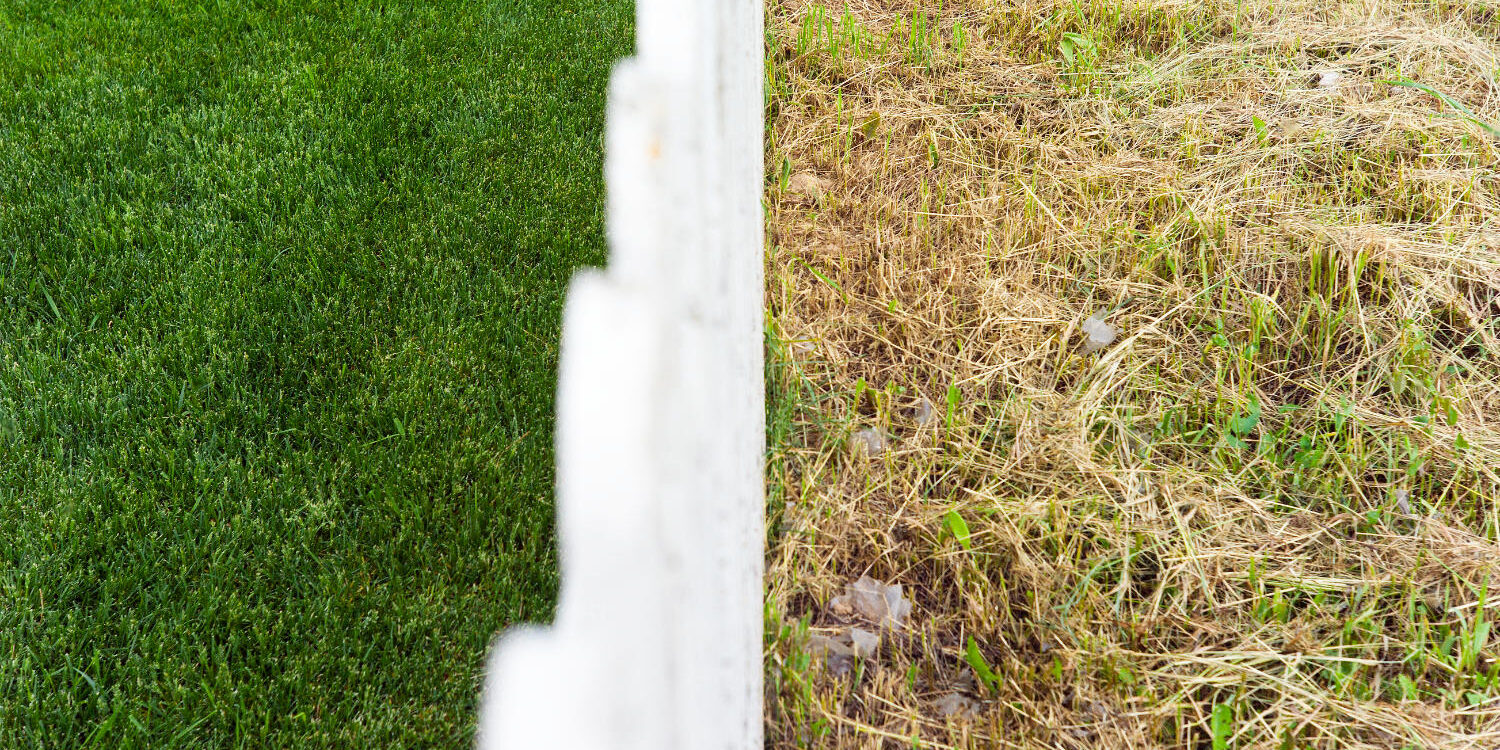Maintaining a healthy, vibrant lawn in Winnipeg requires a delicate balance, especially when it comes to irrigation. Many homeowners assume that nature will take its course when it comes to watering their lawn. The truth is that proper watering is essential. Both overwatering and underwatering can wreak havoc on your lawn’s health and appearance. So, how do you find that sweet spot between overwatering and underwatering? Let’s dive in and explore the signs of both overwatering and underwatering, so you can keep your lawn thriving all season long with proper lawn watering.
A Comprehensive Guide to Lawn Irrigation
Overwatering: Signs Your Lawn is Drowning

- Soggy Soil: Consistently soggy soil is a major red flag of an overwatering lawn. If your lawn feels like a sponge, even hours after irrigation, it’s likely getting too much moisture. Excess water suffocates grassroots and prevents them from absorbing essential nutrients.
- Mushrooms and Fungus: An overwatered lawn becomes a breeding ground for fungi. Keep an eye out for mushrooms popping up or patches of white, powdery mildew. These are clear indicators that your irrigation system needs adjustment.
- Thatch Buildup: Thatch is a layer of dead grass and organic matter that accumulates between the green blades and the soil. While a thin layer of thatch is beneficial, excessive thatch can prevent water and nutrients from reaching the roots. Overwatering exacerbates thatch buildup, creating a barrier to a healthy lawn.
- Shallow Roots: Overwatering encourages shallow root growth. This makes your lawn more susceptible to drought stress and less resilient to foot traffic. Shallow roots are a common side effect of improper irrigation.
Underwatering: Signs Your Lawn is Thirsty

- Brown or Yellow Patches: This is one of the most obvious signs of an underwatered lawn. When grass doesn’t receive enough water through irrigation, it starts to wilt and turn brown or yellow. The discoloration may appear in patches or spread across the entire lawn, signalling a need for increased irrigation.
- Footprints That Linger: If footprints remain visible on your lawn long after you’ve walked across it, it’s a sign that the grass blades are dehydrated and lack the resilience to bounce back. Proper irrigation can help restore your lawn’s bounce.
- Slow Growth: Grass that’s not getting enough water through irrigation will grow slowly or even stop growing altogether. If your lawn seems to be stuck in a growth rut, consider adjusting your irrigation schedule.
- Increased Weed Growth: Weeds are often more drought-tolerant than grass. When your lawn is struggling due to lack of water, weeds may seize the opportunity to take over. Proper irrigation can help your grass outcompete these unwanted invaders.
How to Revive Your Lawn?

Whether you’ve been overwatering or underwatering, there are steps you can take to nurse your lawn back to health.
Overwatered Lawn
- Aerate the soil to improve drainage
- Reduce watering frequency
- Apply a fungicide if necessary
- Adjust your irrigation system to deliver less water per cycle
Underwatered Lawn
- Water deeply and less frequently
- Upgrade your irrigation system with a smart controller
- You may also need to overseed to fill in bare patches
- Create irrigation zones
- Limit foot traffic
What Is The Right Amount of Water?
The ideal irrigation schedule for your Winnipeg lawn depends on various factors, including grass type, soil conditions, and weather. A general rule of thumb is an inch of water per week for most grass types. Aim to water deeply and infrequently. It can be difficult to measure an inch per week, so using a rain gauge is a great tool for this. Using a smart sprinkler system can also help with a watering schedule, because you a manage this system remotely. Just be careful not to over water.
By understanding the signs of an overwatered and underwatered lawn and taking proactive steps to address any issues with proper irrigation, you can ensure your Winnipeg lawn stays lush, green, and healthy all year round. Remember, following a proper watering schedule and regular observation is key to avoid overwatering! Monitor your lawn closely and adjust your irrigation practices as needed depending on the weather. A well properly watered lawn is a healthy lawn!
Need more help? Don’t hesitate to contact us today and we will be glad to give our professional advice or free quote on how to get your lawn looking great!
FAQs
The frequency of irrigation depends on several factors, but a good starting point is to water deeply once or twice a week, providing about an inch of water each time.
Watering in the morning is generally preferred as it allows the grass blades to dry out during the day, reducing the risk of fungal diseases.
Look for signs like footprints that linger, brown or yellow patches, and slow growth. You can also check the soil moisture by sticking your finger a few inches into the ground. If it feels dry, it’s time to water. Consider installing a smart irrigation system to automate this process and ensure your lawn receives the right amount of water at the right time.

